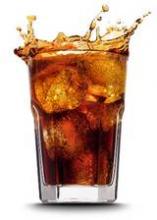Carbonation produces a decrease in the neural processing of sweetness-related signals, particularly those from sucrose, a small functional neuroimaging study shows.
The findings, which suggest that the combination of CO2 and sucrose might increase consumption of sucrose, could have implications for dietary interventions designed to regulate caloric intake, according to Dr. Francesco Di Salle of Salerno (Italy) University and his colleagues.
To assess the interference between CO2 and perception of sweetness, as well as the differential effects of CO2 on sucrose and aspartame-acesulfame, (As-Ac, an artificial sweetener combination commonly used in diet beverages), the investigators performed two functional magnetic resonance imaging (fMRI) experiments to evaluate changes in regional brain activity.
The first experiment, performed in nine volunteers, analyzed the effect of carbonation in four sweet Sprite-based solutions, including one carbonated and sweetened with sucrose, one noncarbonated and sweetened with sucrose, one carbonated and sweetened with As-Ac, and one noncarbonated and sweetened with As-Ac. The second experiment evaluated the spatial location of the strongest neural effects of sour taste and CO2 within the insular cortex of eight subjects.
On fMRI, the presence of carbonation in sweet solutions "independently of the sweetening agent, reduced neural activity in the anterior insula (AI), orbitofrontal cortex (OFC), and posterior pons ... the effect of carbonation on sucrose was much higher than on perception of As-Ac," they noted, explaining that "at the perceptual level ... carbonation reduced the perception of sweetness and the differences between the sensory profiles of sucrose and As-Ac."
This effect may increase sucrose intake, but is also favorable to diet beverage formulations being perceived as similar to regular beverage formulations, the investigators reported online May 28 ahead of print in Gastroenterology.
"It is also coherent with a process of prioritization among perceptual inputs (chemesthetic and gustatory information) deriving from the same body topography and converging to the same cortical regions (AI, OFC), they said (Gastroenterology 2013 [doi:10.1053/j.gastro.2013.05.041]).
To correlate neuroimaging with behavioral data, the ability of carbonation to modulate perception of sweetness was assessed in 14 subjects, who scored the level of perceived sweetness of the solutions on a visual analog scale ranging from 0 to 100 mm. The effect of 1,585 ppm of CO2 added to a 10% glucose solution on the perception of sweetness was also tested in seven subjects.
CO2 was able to significantly reduce sweet-induced taste perceptions as assessed by the volunteers’ visual analog scale recordings: The perception of Sprite-associated sweetness was significantly reduced by CO2 (48 vs. 63 and 48 vs. 55 for As-Ac and sucrose, respectively).
"Similarly, in the presence of carbonation, sweet-induced perception of a 10% glucose solution was significantly reduced (36 vs. 53), the investigators said.
Given the widespread use of CO2 in sweet beverages, the modulation of sweet perception by CO2 is of interest, they noted.
The findings, which suggest that CO2 modulates the perception of sweetness thereby reducing the global neural processing of sweetness, the processing of sucrose more than of As-Ac, and the processing difference between sweetening agents via modulation of the perception of sweetness, is "of utmost importance for designing carbonated beverages and is relevant to the regulation of caloric intake," they said.
"This effect is driven by the integration of information on gastric fullness and on nutrient depletion, conveyed to a brain network where the autonomic brainstem circuitry and tractus solitarius neurons play a critical role in homeostatic functions," they added.
It may be that taste and CO2-related information influence food choices and intake through integration in the tractus solitarius with input from the gastrointestinal tract, they suggested, explaining that "the reduced discrimination between sucrose and As-Ac induced by CO2 would promote the consumptions of low-calorie beverages and would converge with CO2-induced gastric distention in limiting caloric intake."
This study was supported in part by the Coca-Cola Company. One author, Dr. Rosario Cuomo, was sponsored by the Coca-Cola Company. The remaining authors reported having no disclosures.

